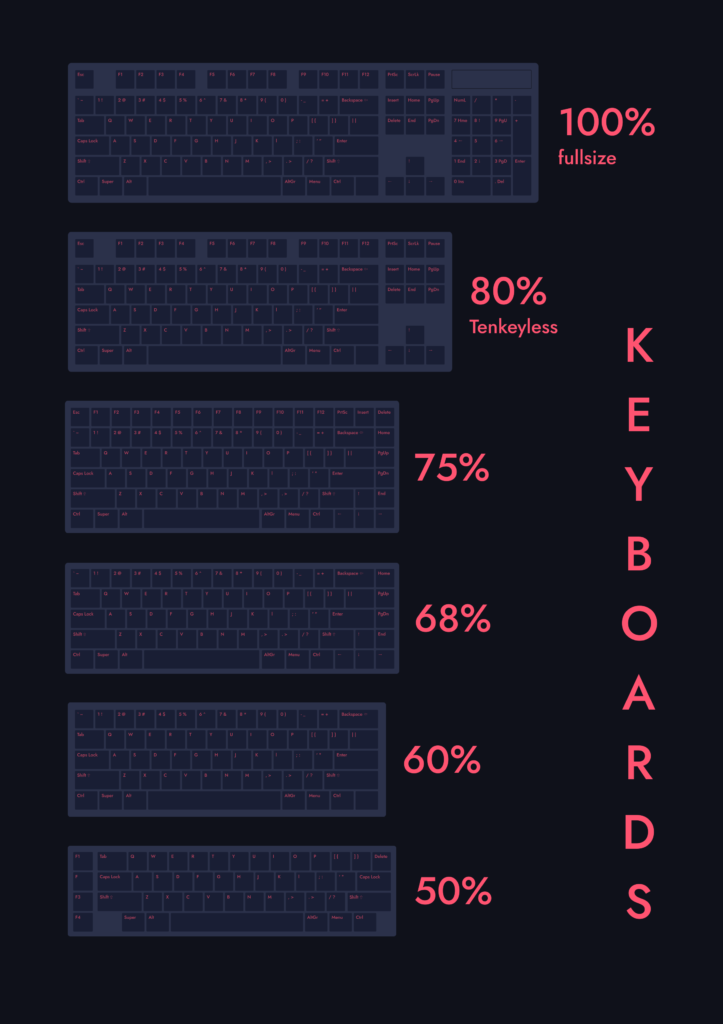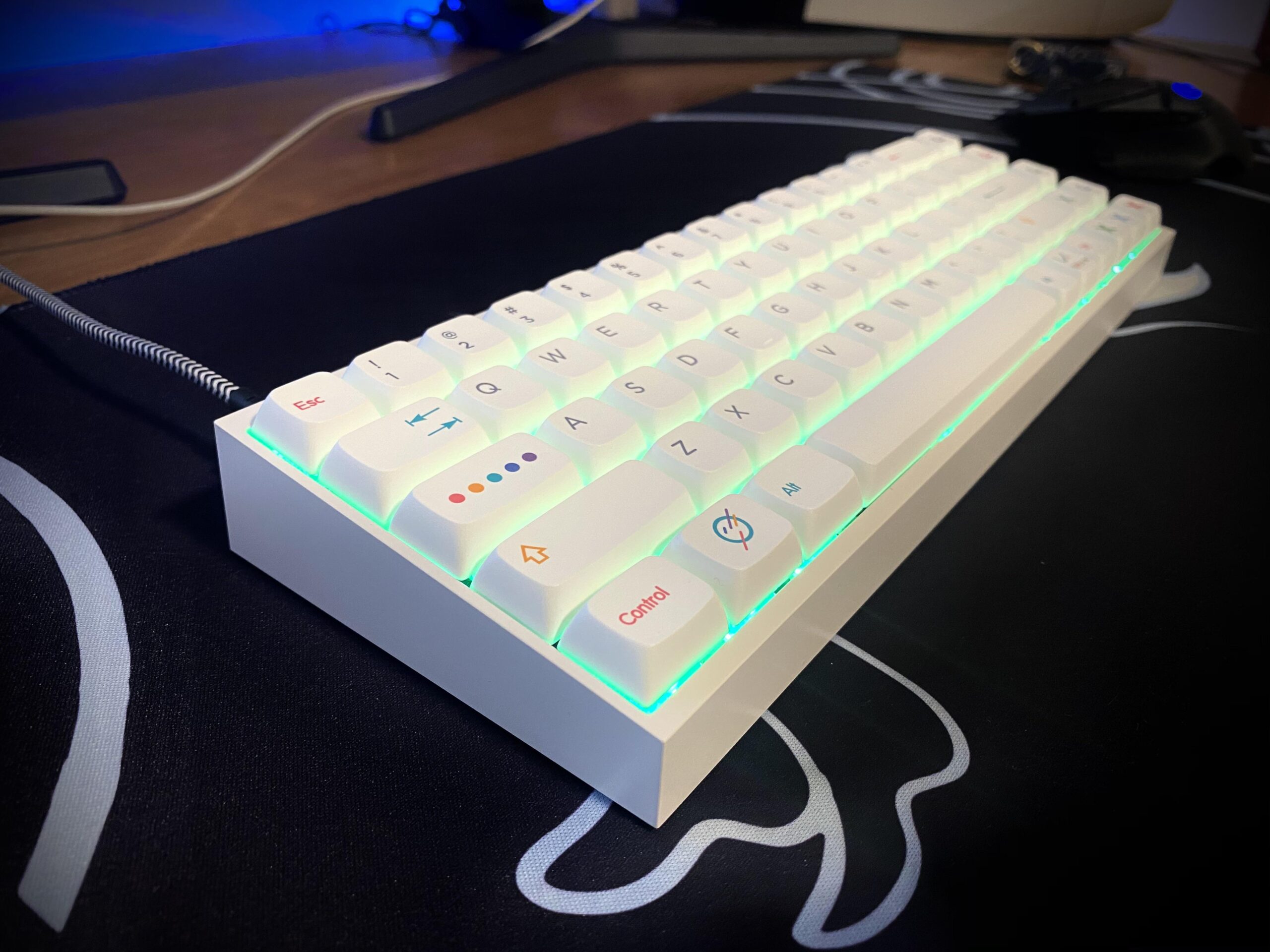If you are an avid PC gamer or a professional typist, you know that the keyboard is one of the most important peripherals to have. Mechanical keyboards have become increasingly popular in recent years due to their durability, tactile feedback, and customizability. However, choosing the right size mechanical keyboard can be a daunting task as there are various sizes available in the market. In this article, we will explore the pros and cons of different mechanical keyboard sizes and which one is the best for your needs.
What are mechanical keyboards?
Mechanical keyboards are keyboards that use individual mechanical switches for each key instead of a rubber dome or membrane under the keycaps. The switches provide tactile and audible feedback when a key is pressed, which makes typing or gaming more enjoyable and accurate. Mechanical keyboards are also known for their durability as they can withstand millions of keystrokes and last longer than traditional membrane keyboards.
Different sizes of mechanical keyboards
Mechanical keyboards come in various sizes, ranging from compact 60% keyboards to full-size keyboards with numeric keypads. The size of a mechanical keyboard refers to the number of keys on the keyboard, and each size has its own advantages and disadvantages.

60% mechanical keyboards
60% mechanical keyboards are the smallest size mechanical keyboards available in the market. They have 60% of the keys found on a full-size keyboard, which means they do not have a numeric keypad, function keys, arrow keys, or dedicated media keys. Instead, these keys are accessed through function layers, which require the use of a function key to access them.

Pros
- Compact and lightweight, making them ideal for travel and small workspaces
- Require less desk space and allow for a more ergonomic typing position
- Customizable through function layers and programmable keys
- Affordable compared to larger mechanical keyboards
Cons
- Lack dedicated keys found on larger keyboards, which may require additional time to adjust
- May not be suitable for professionals who need dedicated keys for their work
- Can be more difficult to type on due to the lack of dedicated arrow keys and function keys
75% mechanical keyboards
75% mechanical keyboards are the mid-size option for mechanical keyboards. They have 75% of the keys found on a full-size keyboard, which means they have all the standard keys, but lack a numeric keypad.

Pros
- Compact size without sacrificing standard key layout
- Provide a good balance between functionality and ergonomics
- Customizable through function layers and programmable keys
- Can be more affordable than full-size mechanical keyboards
Cons
- Lack a numeric keypad, which may be a deal-breaker for professionals who need it
- Some models may have non-standard key sizes, making it difficult to find replacement keycaps
Full-size mechanical keyboards
Full-size mechanical keyboards are the largest size mechanical keyboards available in the market. They have all the standard keys found on a keyboard, including a numeric keypad, function keys, and arrow keys.

Pros
- Provide a full typing and gaming experience without needing to use function layers
- Ideal for professionals who need dedicated keys for their work
- Customizable through programmable keys and backlighting
- Many models come with wrist rests for added comfort during extended use
Cons
- Larger size requires more desk space and may not be suitable for small workspaces or travel
- More expensive compared to smaller mechanical keyboards
- May not be as ergonomic as smaller mechanical keyboards
Which size mechanical keyboard is best for you?
Choosing the right size mechanical keyboard depends on your personal preferences and needs. If you prioritize portability and desk space, a 60% mechanical keyboard may be the best option. If you need a full typing and gaming experience without sacrificing desk space, a 75% mechanical keyboard may be the best option. If you prioritize functionality and need dedicated keys for your work, a full-size mechanical keyboard may be the best option.
Factors to consider when choosing a mechanical keyboard
Aside from size, there are other factors to consider when choosing a mechanical keyboard. These include the type of mechanical switch, backlighting, macro keys, and programmability. It is important to choose a mechanical keyboard that meets your needs and fits your budget.
Frequently Asked Questions (FAQs)
- Are mechanical keyboards better than membrane keyboards?
- It depends on personal preference and use case. Mechanical keyboards offer a tactile and responsive typing experience, while membrane keyboards are quieter and more affordable.
- What is the difference between a 60% and 75% mechanical keyboard?
- The main difference is the size and number of keys. A 60% keyboard has 60% of the keys of a full-size keyboard, while a 75% keyboard has 75%. This means that a 60% keyboard is more compact and portable, while a 75% keyboard offers more functionality.
- Can you use a full-size mechanical keyboard for gaming?
- Yes, full-size mechanical keyboards can be used for gaming. They often have features such as anti-ghosting and customizable macro keys, which can be beneficial for gaming.
- What are the most common types of mechanical switches?
- The most common types of mechanical switches are Cherry MX switches, which come in different colors indicating different characteristics such as tactile feedback and actuation force. Other popular switches include Kailh and Gateron.
- How do I clean my mechanical keyboard?
- To clean a mechanical keyboard, first unplug it. Then, use a keycap puller to remove the keycaps, and clean them with warm water and soap. Use a brush or compressed air to clean the switches and PCB, and wipe the case with a damp cloth.

